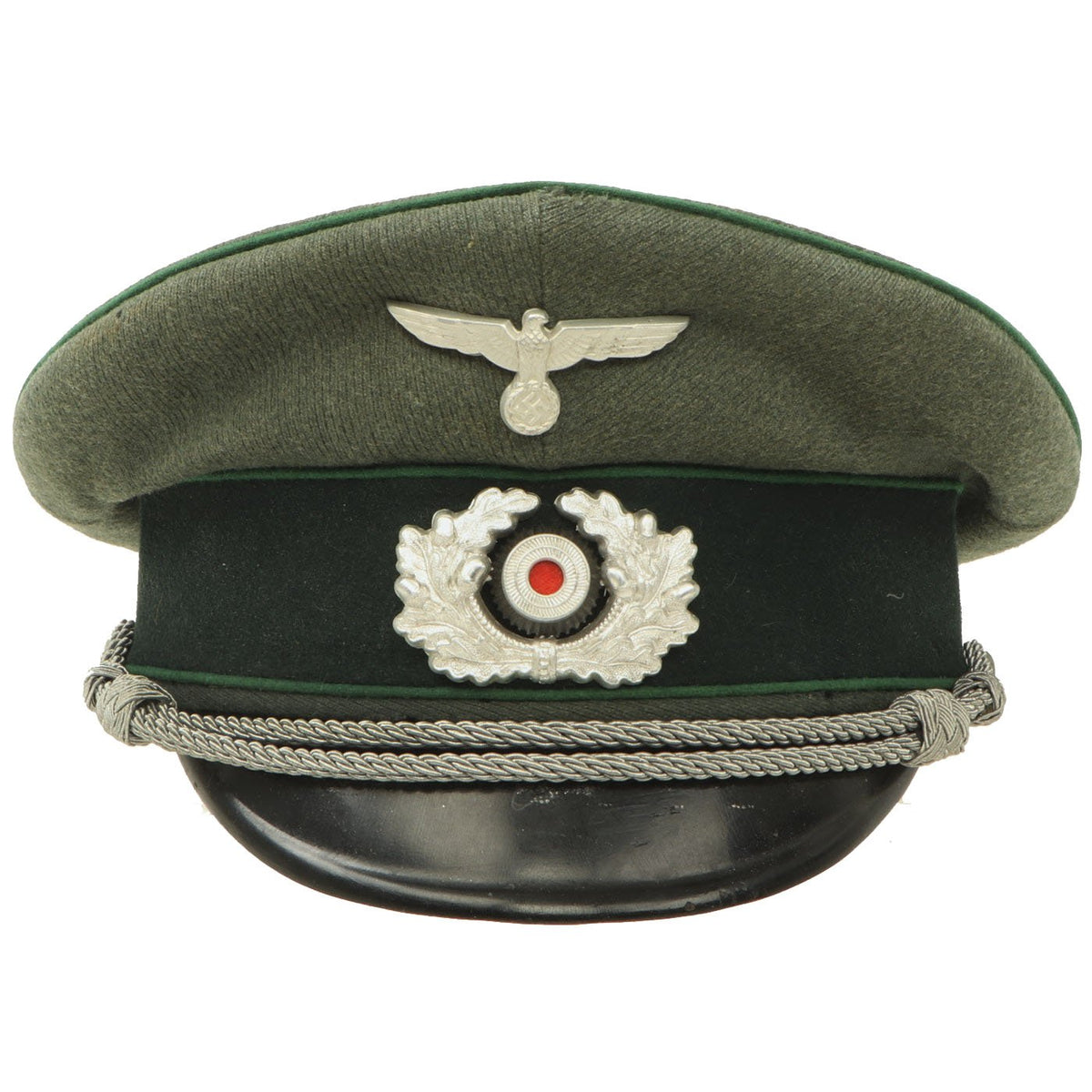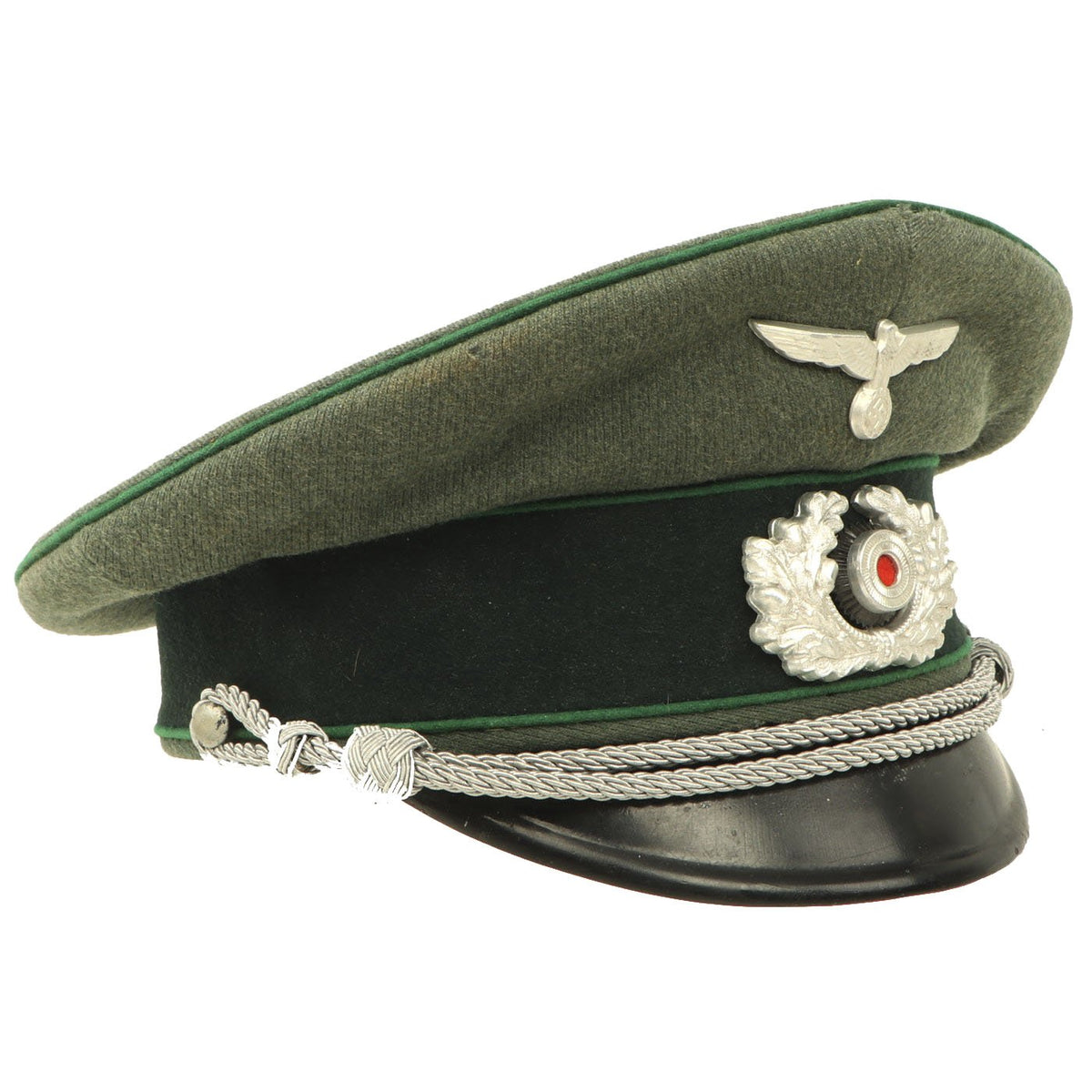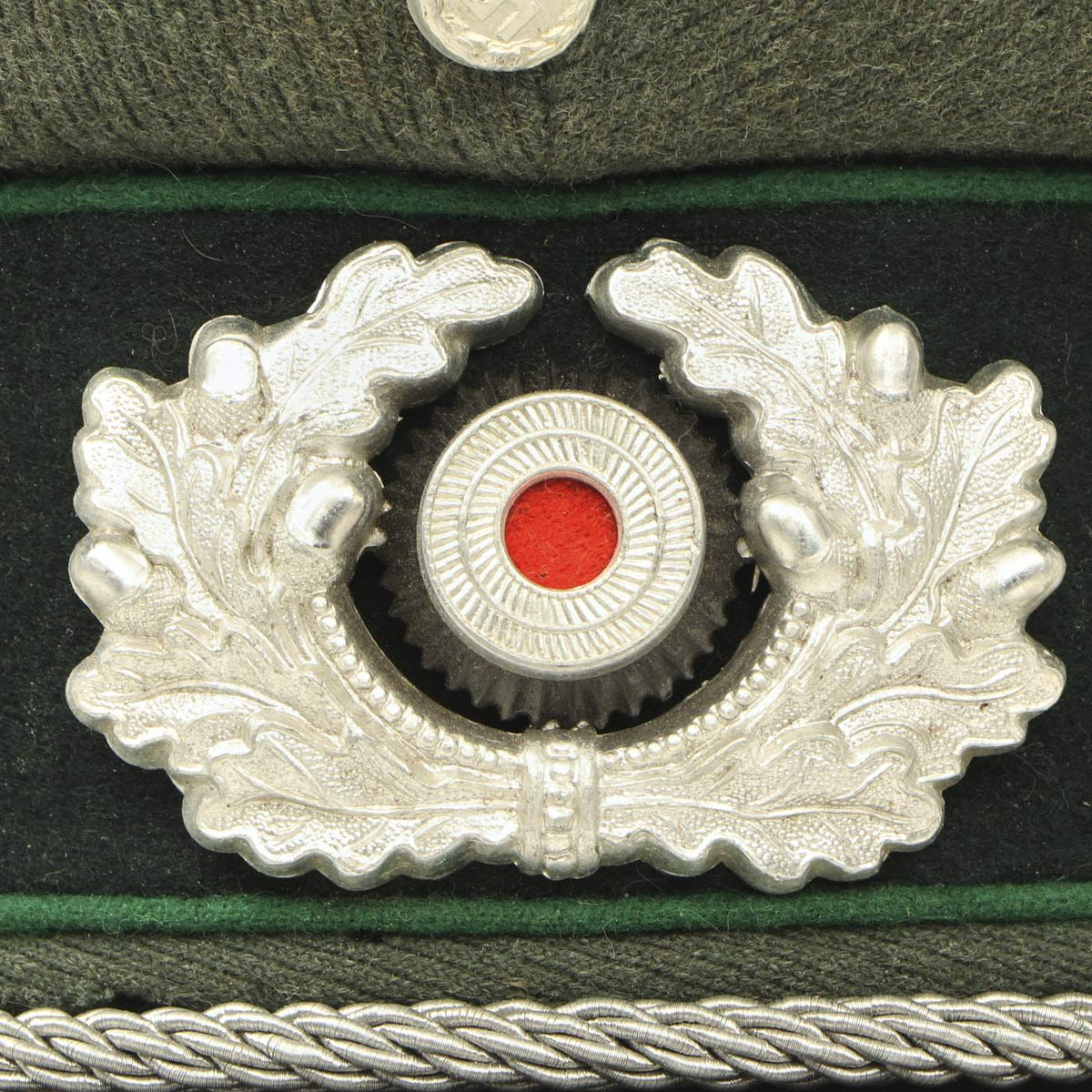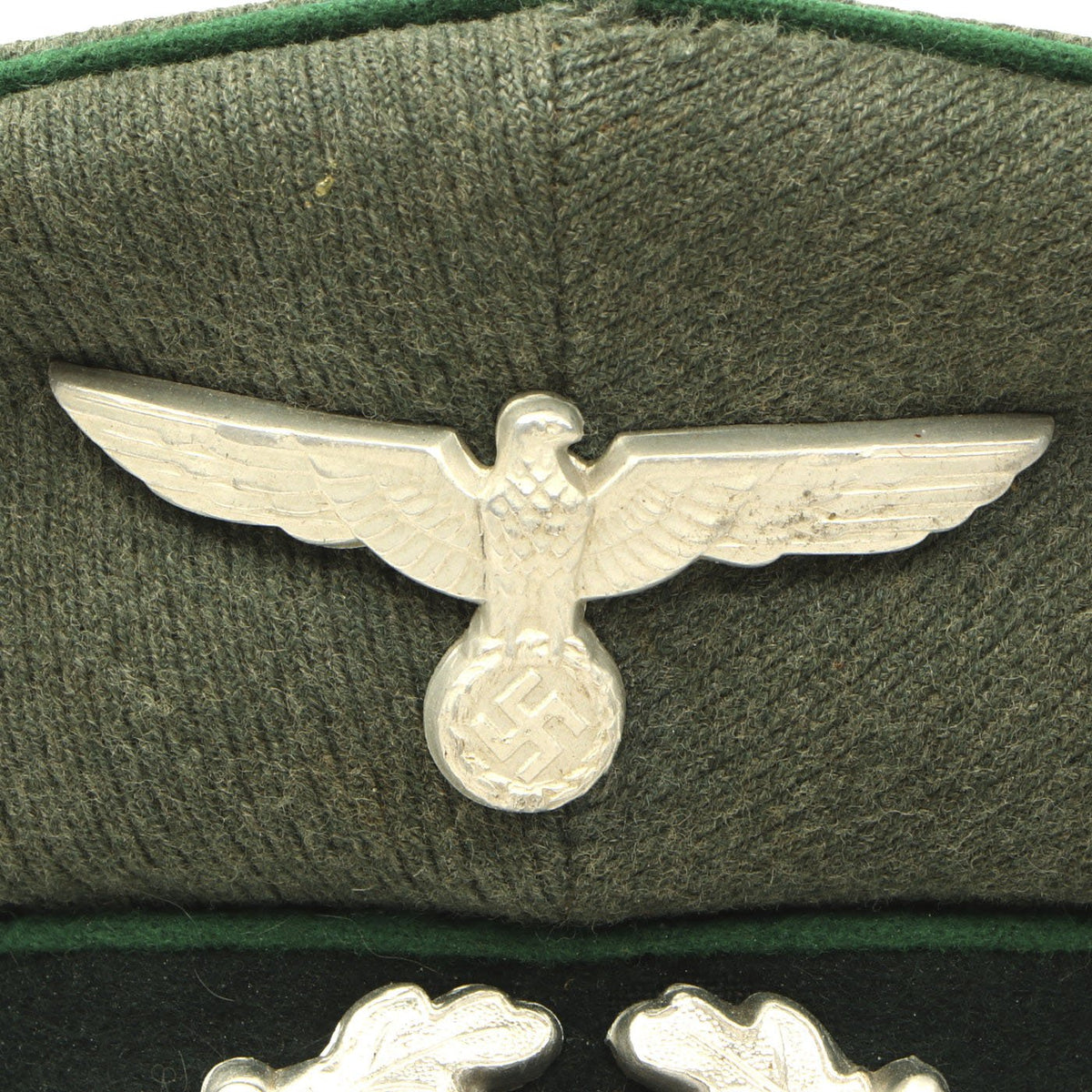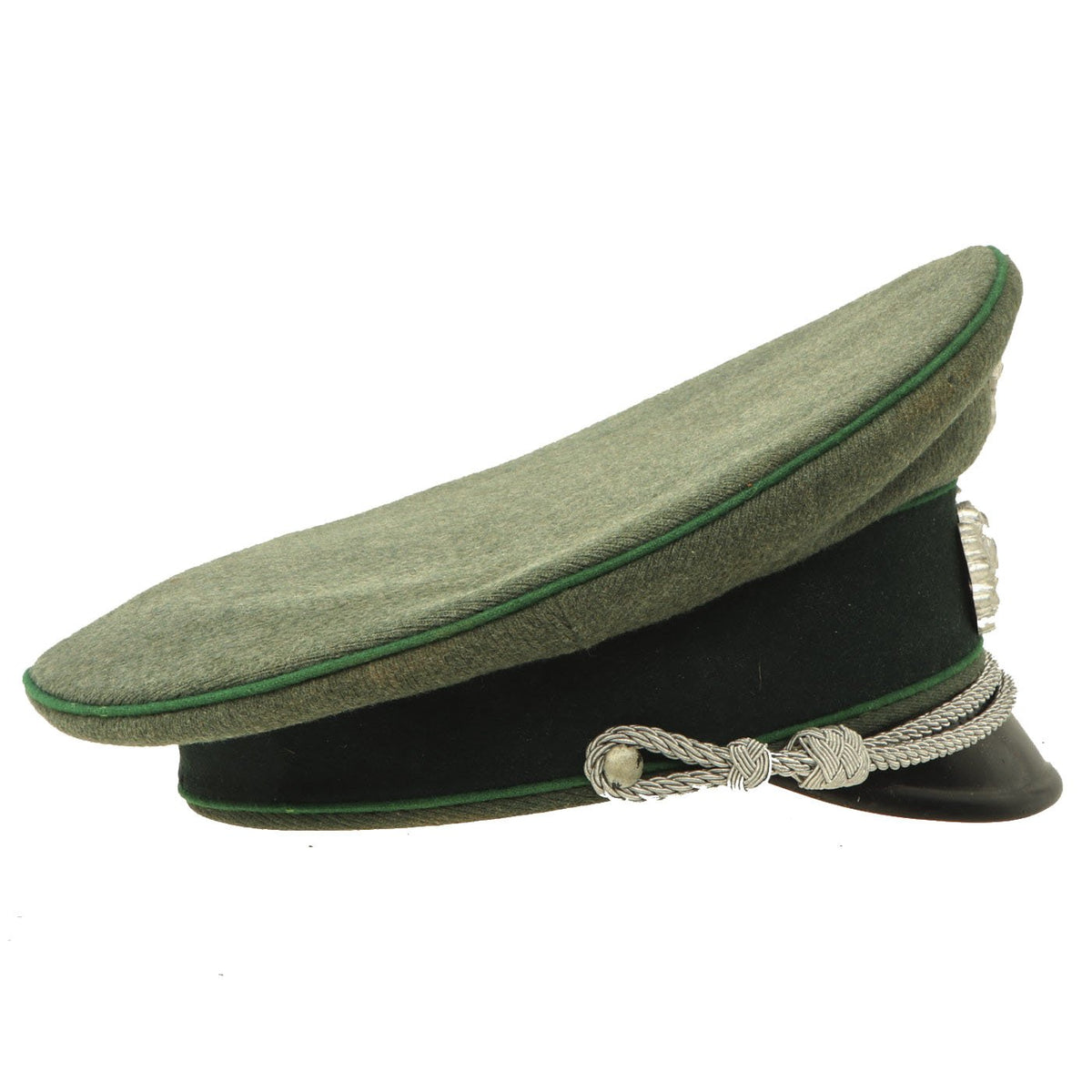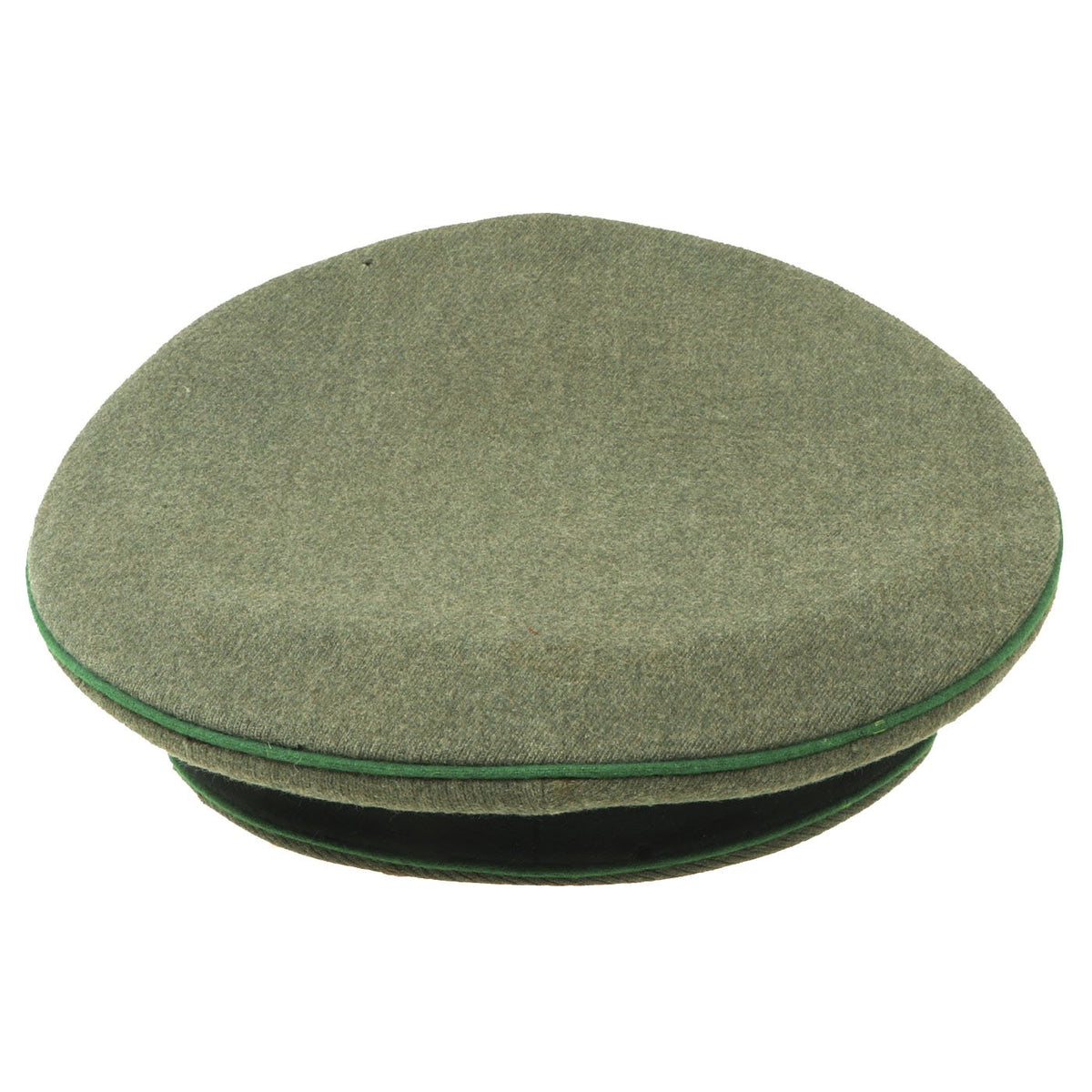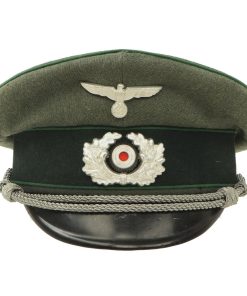Original German WWII Heer Gebirgsjäger Mountain Troop Officer Visor Cap – Size 60 1/2 Original Items
$ 795,00 $ 238,50
Original Item: Only One Available. This cap is a very good example of a Rare German WWII Wehrmacht Heer Gebirgsjäger Mountain Troop Officer Schirmmütze visor cap, in a nice large size 60 1/2cm. It features the typical green wool gabardine construction with a forest green band and a traditional high forward crown. The also has matching Hellgrün (Light Green) piping along the top edge and flanking either side of the band, the Corps Color (Waffenfarbe) for Gebirgsjäger (mountain troops ), Skijäger (ski troops), and Jäger (light infantry troops). It has the correct silver bullion chin strap, indicating that it is for an officer.
It is decorated with a well detailed silvered eagle insignia on the peak and and an open silvered zinc wreath surrounding a tri-color cockade on the band. The chin strap is attached with the standard silvered buttons on either side of the cap. The vulcanfibre visor has a smooth black leather-look upper, exhibiting minimal wear along the edge and is brown on the underside. The tan leather sweatband is in good supple condition, though there is a significant portion torn out, as shown in the pictures. The inside of the cap is lined with light brown cloth, with a fully intact top plastic sweat shield and stitching. There is no maker mark, but it is marked with size 60 1/2 under the shield.
Condition very good, with only a few condition issues aside from the damaged sweatband. There is a small tear on the front peak of the cap, which allows the cheesecloth under padding to be seen. There are also a few areas of minor mothing, particularly under the edge of the crown.
A great example of a classic hat worn by German Army Mountain Troop Officers in WWII. Very impressive and ready to display!
Gebirgsjäger material is among the most popular of all German WWII items. They were the light infantry part of the alpine or mountain troops (Gebirgstruppe) of Germany and Austria. The word Jäger (meaning “hunter” or “huntsman”) is a characteristic term used for light-infantry or light-infantryman in German-speaking military context.
The mountain infantry of Austria have their roots in the three Landesschützen regiments of the Austro-Hungarian Empire. The mountain infantry of Germany carry on certain traditions of the Alpenkorps (Alpine corps) of World War I. Both countries’ mountain infantry share the Edelweiß insignia. It was established in 1907 as a symbol of the Austro-Hungarian Landesschützen regiments by Emperor Franz Joseph I. These troops wore their edelweiss on the collar of their uniforms. When the Alpenkorps came to aid the Landesschützen in defending Austria-Hungary’s southern frontier against the Italian attack in May 1915, the grateful Landesschützen honored the men of the Alpenkorps by awarding them their own insignia: the edelweiss. Together with the Fallschirmjäger (Paratroopers) they are perceived as the elite infantry units of the German Army.
The German Schirmmütze Visor Cap:
The visor cap (Schirmmütze) was an important part of the headgear worn by German uniformed military, civil, paramilitary and political organizations during the Third Reich. This was the standard cloth headgear worn as a part of the service uniform. Visor caps were worn outdoors as well as indoors, and were often required to be worn by all personnel on duty. Visor caps were made in versions specific to each organization and were often further differentiated through the use of insignia, colored piping, or style of chin cord, to indicate rank, role or branch. The insignia used on these caps ranged from simple stamped metal emblems, to elaborate hand embroidery. Visor caps were issued to enlisted soldiers and NCOs in the military and in some other organizations. Officers had to purchase their own hats, and lower ranks could choose to purchase caps that were of a higher quality than the rather basic, issue examples. The private purchase caps were generally made in very high quality, with fine materials. A wide variety of fabrics were used, from Trikot and doeskin, to heavy wool, or even lightweight white fabric for summer wear. In the military, issue of these caps was generally suspended shortly after the outbreak of the war, but they continued to be worn by some troops until the end of the war.
Fast Shipping with Professional Packaging
Thanks to our longstanding association with UPS FedEx DHL, and other major international carriers, we are able to provide a range of shipping options. Our warehouse staff is expertly trained and will wrap your products according to our exact and precise specifications. Prior to shipping, your goods will be thoroughly examined and securely secured. We ship to thousands clients each day across multiple countries. This shows how we're dedicated to be the largest retailer on the internet. Warehouses and distribution centres can be located throughout Europe as well as the USA.
Note: Orders with more than one item will be assigned a processing date depending on the item.
Before shipping before shipping, we'll conduct a thorough inspection of the items you have ordered. Today, the majority of orders will be delivered within 48 hours. The delivery time will be between 3-7 days.
Returns
The stock is dynamic and we cannot completely manage it because multiple stakeholders are involved, including our factory and warehouse. So the actual stock may alter at any time. It's possible that you may not receive your order once the order has been made.
Our policy is valid for a period of 30 days. If you don't receive the product within 30 days, we are not able to issue a refund or an exchange.
You can only return an item if it is unused and in the same state as the day you received it. You must have the item in its original packaging.
Related products
Uncategorized
Uncategorized
Uncategorized
Uncategorized
Uncategorized
Uncategorized
Uncategorized
Uncategorized
Uncategorized
Uncategorized
Uncategorized
Uncategorized
Armoured Fighting Vehicles of the World: AFVs of World War One (Hardcover Book) New Made Items
Uncategorized
Uncategorized
Uncategorized
Angolan Rebel 1970s era 60mm Inert Display Mortar from Angolan Civil War Original Items
Uncategorized
Uncategorized
Uncategorized
Uncategorized
Uncategorized
Uncategorized
Uncategorized
Australian WWII Owen MK1 Machine Carbine SMG Custom Fabricated Replica with Sling Original Items
